Last Updated on 28.08.2024 by hrushetskyy

Have you been keeping a set of tires in your garage, waiting to put them onto your car? If so, you might want to check when they were made, as the condition of car tires will start to deteriorate even when they are not being driven. In fact, even when in storage, tires only last between 6 and 10 years, depending on how you store them and the environmental conditions they are subjected to. So read on to learn all about how long car tires last in a range of situations.
Factors affecting your tire life
Did you know that the lifespan of stored tires is much the same as that of used tires? The National Highway Traffic Safety Administration (NHTSA) and the Tire Manufacturers Association suggest that a tire is only 100% safe to use until it turns 5 years old. However, some admit that a tire can be operable for up to 10 years if you check it for issues annually, especially after the fifth year.
So, while the factors for tire life for tires in use include things like keeping up proper tire maintenance along with your driving style and driving habits, there are different factors for tires being stored.
Two groups of factors influence the time that stored tires last:
- Environmental conditions
- Storage conditions.
Environmental conditions
Environmental conditions are a key cause of tire aging in storage, which can be frustrating as there is often not much you can do about it. These factors include oxygen, ultraviolet (UV) light, ozone, and heat damage.
Oxygen
Oxygen is the main element responsible for rubber deterioration, breaking it down from both outside and inside. Most tires are inflated with compressed air, which is 21% oxygen. So, unlike UV and ozone damage, the oxidation process is twice as fast.
Special antioxidant compounds are used in rubber to stop oxidation but only slow the aging process down. If oxygen alters the polymer structure in any way, rubber deteriorates. So, unless your tires are stored without oxygen, this will affect tire life.
UV Light
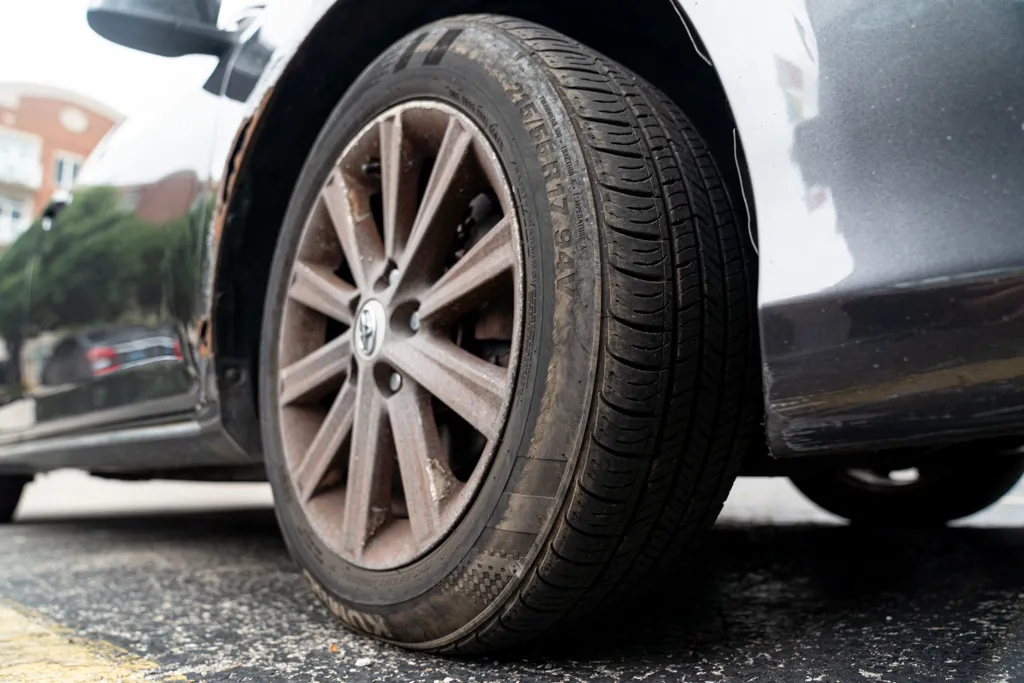
When tires are exposed to sunlight, the rubber immediately absorbs UV radiation. The process is the same with natural and synthetic polymers comprising rubber compounds. The process of deterioration due to the impact of UV is called photodegradation.
Tire manufacturers try to fight this with carbon black, which helps absorb sunlight. However, over time, it loses the ability to stabilize UV radiation, so the rubber is eventually exposed to the destructive rays, and the tires last less time.
Ozone
In brief, ozone is a type of oxygen with an extra atom in it, found in the stratosphere and troposphere. The type of ozone that is destructive to rubber is usually a result of manmade pollution. The impact of the gas on tires was first noticed in the 1950s, with rubber deteriorating faster in large cities than in small towns.
Tire manufacturers try to fight ozone damage by putting special compounds in their products. These waxes and oils can help if the tire is used, meaning the compounds are brought closer to the surface. However, as there’s no circulation when tires are simply stored, the compounds become useless, affecting the tire lifespan.
It’s important to remember that cracks from ozone impact cannot be repaired.
Heat
Heat, combined with oxygen, accelerates rubber aging with the process of thermo-oxidative degradation. According to NHTSA research data, the tire lifespan is shorter in hotter climates, and consequentially, they fail quicker, no matter whether they are used or stored.
Storage conditions
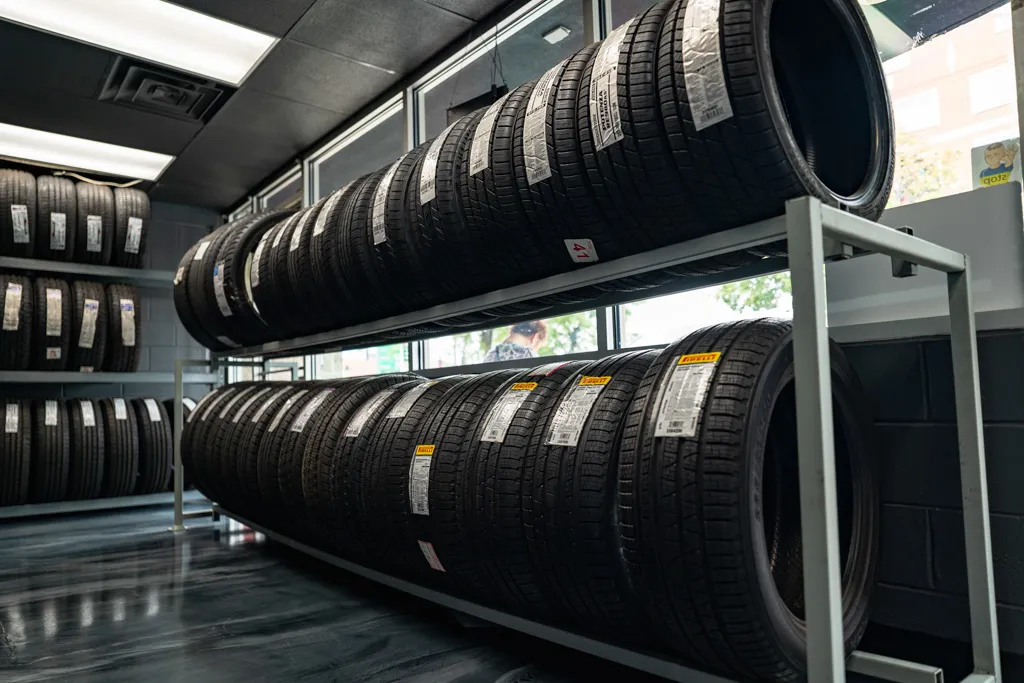
The way you store your tires also affects their lifespan. This group of factors includes temperature and light, ozone exposure, humidity, and deformation. Luckily, you can help extend tire life with these factors.
Temperature and light
As mentioned above, both heat and UV light can damage tires in storage, but you can reduce these risks. We recommend you store tires in a cool place, ideally not warmer than 77 F and not colder than 32 F. You should also ensure your tires are stored away from direct sunlight or strong artificial light, as both usually emit UV.
Ozone exposure
Another factor affecting tire lifespan is ozone exposure. This means you should always store your tires away from any ozone-producing equipment, such as electric motors, fluorescent lamps, generators, etc. Anything that can make an electric discharge should be removed from your storage room. Excess exposure to ozone can cause cracking of the tire tread when any pressure is applied.
Tire cracks caused by ozone exposure
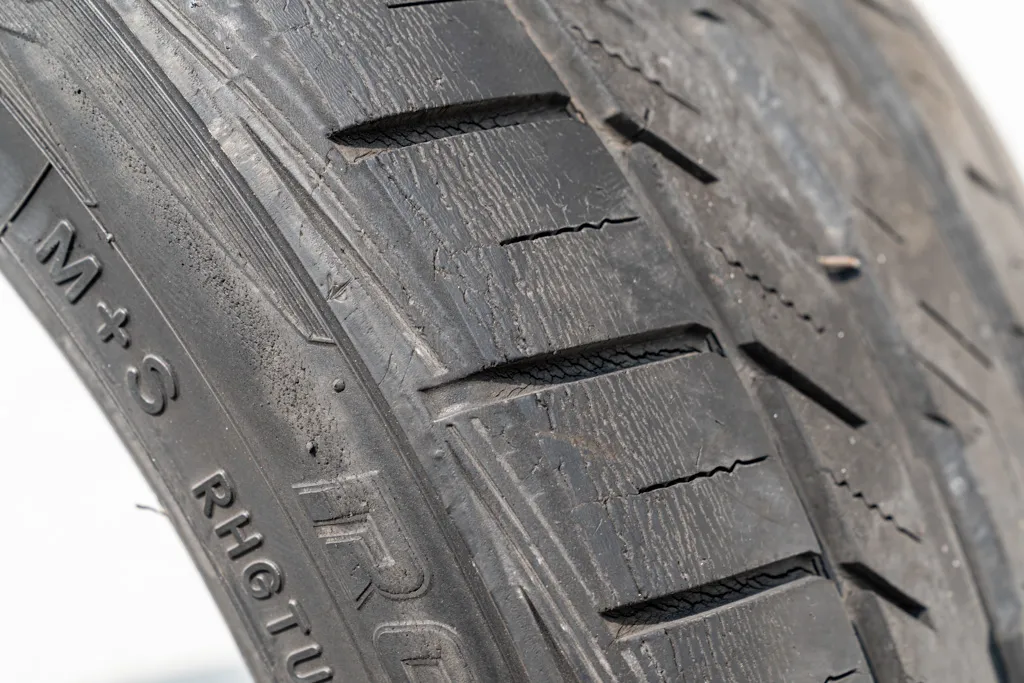
Humidity
Moisture and humidity can also reduce the life of your tires in storage. So make sure there aren’t any water bodies or any other source of humidity near or in the storage room. If exposed to excessive humidity, tires last less time—they become covered with condensation, which is highly undesirable. Liquids are also potential sources of ozone, which can destroy rubber.
Note: Tires have metal layers—steel belts and bead wire—so prolonged storage in humid conditions can lead to corrosion and separation of these parts.
Deformation
You don’t want your tires to become bent out of shape in storage. This means that you shouldn’t store tires either mounted or inflated. Always keep them vertically on a slightly elevated surface. This position will put the least amount of pressure on the tire. If it’s impossible to store them vertically, if you don’t have enough space, make sure the pile of tires isn’t higher than 6 feet. This will prevent putting extreme pressure on the sidewalls of the bottom tire. Deformed tires will not regain their form when pressurized — in fact, they may actually break.
7 keys to properly storing tires and making them last longer
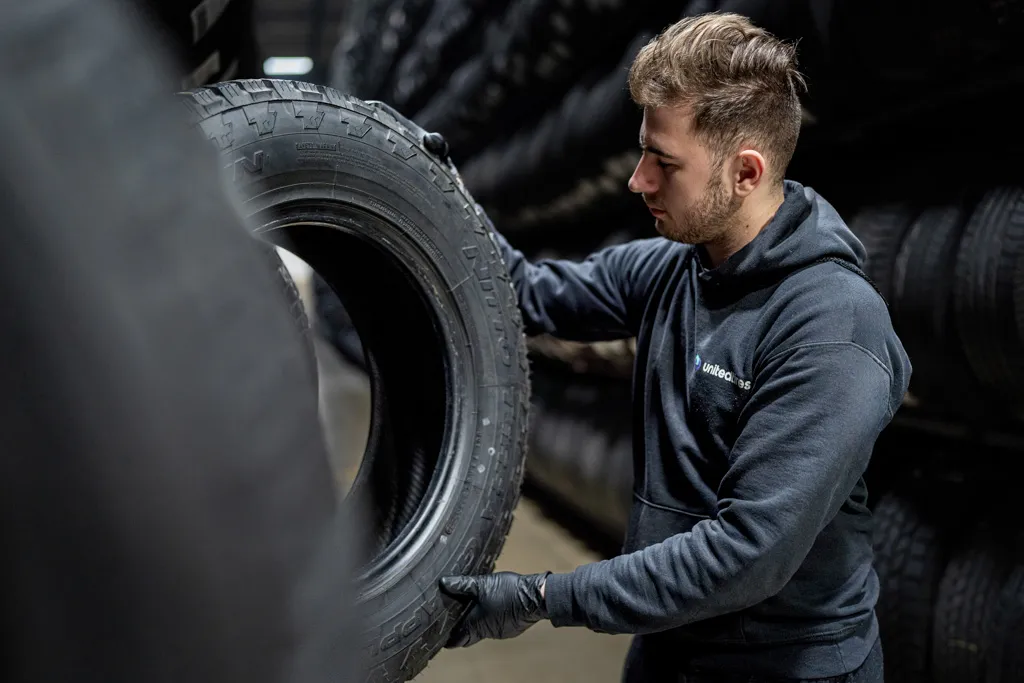
If you need to store your tires, there are certain things you can do to improve storage conditions and help your tires last longer:
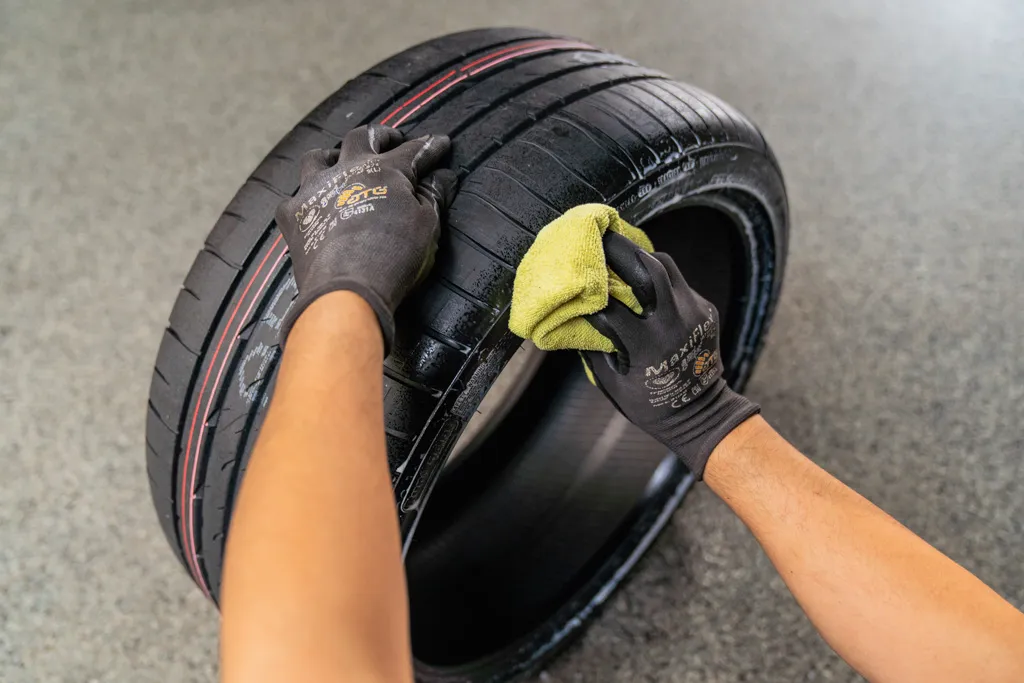
- Clean them before storage
If the tires were already mounted, clean them with a brush, water, and soap, and dry them afterward. This will help you remove undesirable contaminants and excess humidity from the tire’s surface. Also, don’t apply any tire dressings after cleaning, as all the necessary compounds are already in the rubber.
2. Don’t store them mounted on a loaded vehicle
If you intend to store a vehicle, make sure to take the tires off it. The pressure from the vehicle’s load will stretch and deform the rubber, shortening the tire’s lifespan.
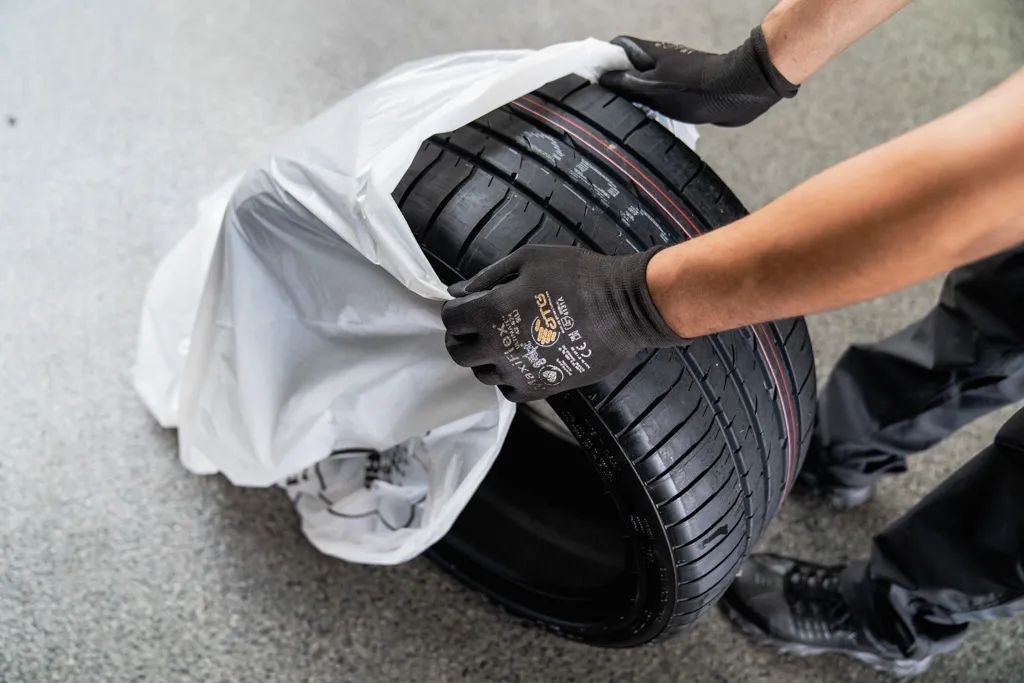
3. Put tires in airtight plastic bags.
After they are clean and dry, put each tire in an airtight plastic bag to keep the oils from evaporating. You must make sure you take out as much air as possible and seal the bag tightly.
4. Use tire totes
You can use tire totes for more convenience in storing and carrying, but remember that they aren’t airtight. A good way to counteract this is to put the tires in bags first and then use tire totes on top.
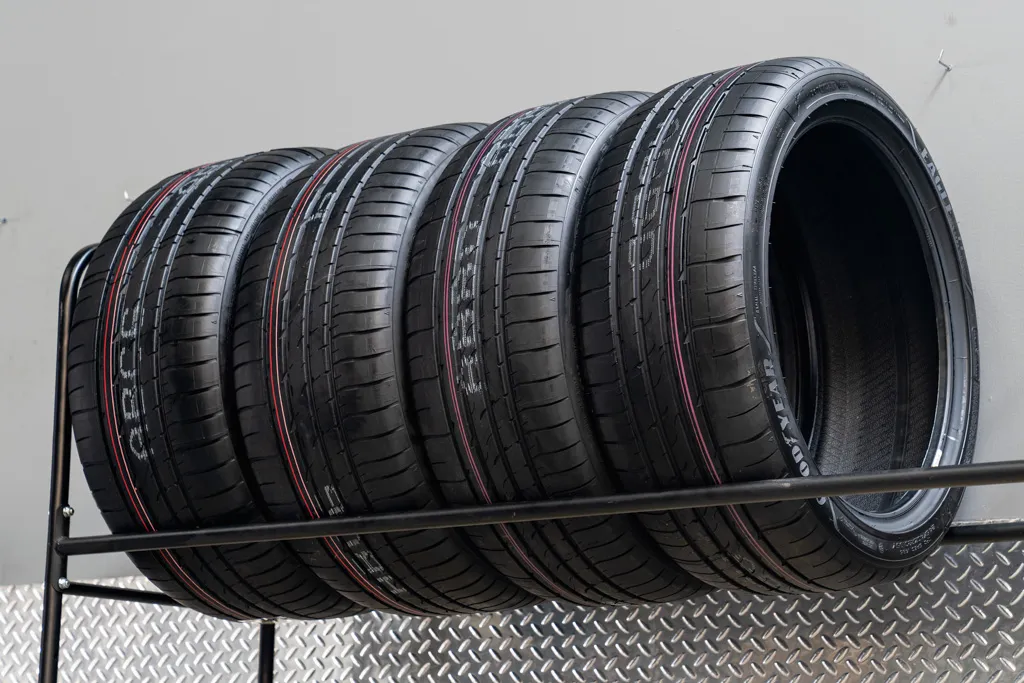
5. Keep UV, humidity, and ozone away
Store tires in a cool, dry place without potential sources of ozone or strong, direct light. This will keep the main environmental hazards away from your tires. The best way to make tires last longer is to store them in a climate-controlled room.
6. Store them white-to-white, black-to-black
If you stack many tires together, put white parts against the white so as not to stain them. The rubber used for the side with white parts and the black side may have different compounds. As the oil from the tire’s black side can migrate to the white parts, it’s better to stack color to color.
7. Don’t hang them unless mounted
If you store your tires mounted on wheels, you can hang them without any doubts. However, if the tire isn’t mounted, you shouldn’t hang it for a long time, as it will deform. Also, if the tires are mounted and you don’t want to hang them, it’s better to store them stacked.
Why tires age even if they’re not used?
Though you’re not using them, it might seem strange that tires still deteriorate. However, it happens due to a few factors. A tire’s useful life gets shorter because of the rubber aging, as the material is always exposed to oxygen. The oxygen causes the rubber particles to harden and become less flexible. As a result, the rubber starts to crack on both the outside and inside, which can cause tread or steel cord separation and complete tire failure.
Since even long-lasting rubber eventually ages, we recommend that you don’t use any tires older than 10 years old. You can learn more about how often you should buy new tires.
This means that it’s essential to determine the age of any stored tires by reading the date code on their sidewall. Remember, a tire’s age is counted from the year of manufacture, not the date you purchased it. If you buy a tire that was stored in a shop for five years, you may be wasting your money.
What about tires in use?
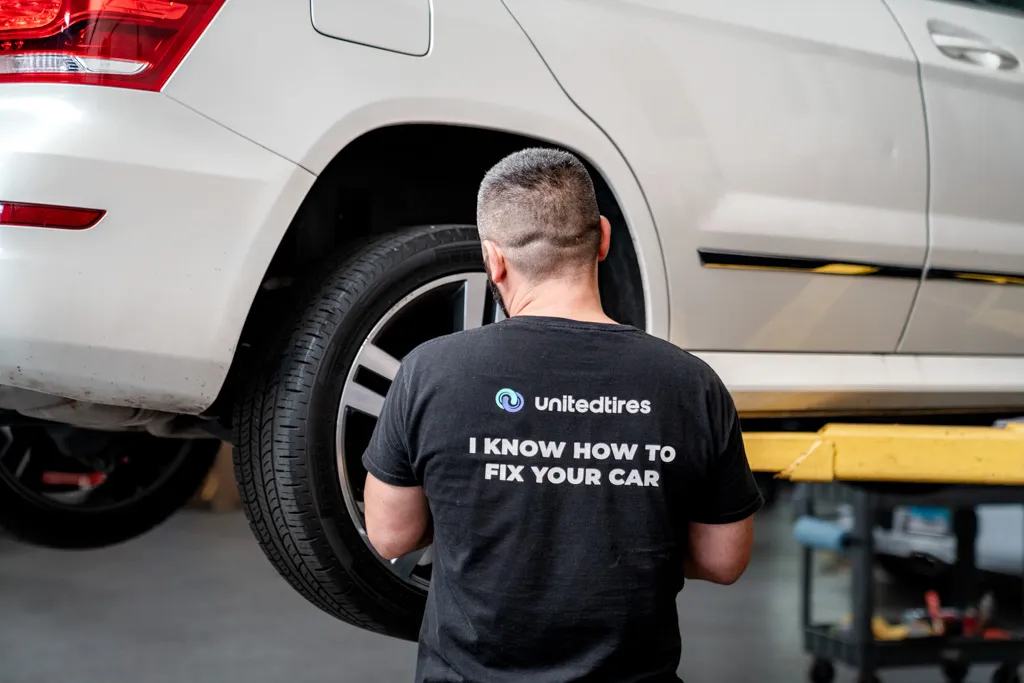
Let’s also give you a quick rundown of the factors that age tires that are in use.
Tire wear and tread depth
When you’re driving on a set of tires, you’ll see their age in the tire wear and tread depth. However, various factors influence how fast your tread depth reduces. Things that lead to premature tire wear include:
- Poor maintenance—Proper tire maintenance is essential to keeping your tires in good condition. Check your tire pressure regularly and look for signs of uneven tread wear. If your air pressure is low, make sure to fill it to the correct tire pressure as quickly as possible. If you notice signs of uneven tire wear, go to a mechanic to have the problem investigated.
- Aggressive driving habits—The way you drive can affect your tire life. Accelerating, braking, and cornering too aggressively can damage your tire tread and sidewalls, reducing your tire longevity.
Frequently Asked Questions
How many miles should tires last?
Most tires are built to last anywhere from 25,000 to 50,000 miles under normal driving conditions. However, this can vary based on a lot of factors. Things like the tire’s design (high-performance tires may have a shorter life), your driving habits (frequent hard stops can wear tires faster), and how well you maintain them (getting your tires rotated regularly and keeping them properly inflated are key) can all affect how long your tires will actually last. So, while the numbers give you a ballpark when you need to replace tires, it might be a bit different. Keep an eye on them, and don’t forget to check the tread depth and look for any signs of uneven wear or damage regularly.
How often should car tires be replaced?
A good rule of thumb is to consider replacing your car tires every 6 years or sooner if they’re worn down. Check for tread depth of 2/32″ or less — that’s when tires must be replaced. But don’t just watch the calendar or the tread; stay alert to signs like vibrations, visible damage (cracks, bulges, and the like), or if your car starts feeling like it’s handling a bit off in wet conditions. And remember, even if they look okay to the naked eye, materials in tires age over time, potentially compromising their integrity and safety. So, if you’re unsure, get a tire professional to look them over.
Are 7-year-old tires safe?
While it is possible that 7-year-old tires are safe, there is a good chance that it’s time for you to buy new tires. Even if those tires have been stored carefully, looking pristine with plenty of tread left, they may not be safe to drive. Rubber compounds break down over time, influenced by factors like temperature, sunlight, and oxygen. After about 5 to 6 years, tires start to show their age, with the risk of dry rot, cracks, and compromised performance. So, even though those 7-year-old tires might appear serviceable, it is probably time to buy a new set.
How long do factory tires last on a new car?
Typically, factory tires are designed to last you 50,000 to 60,000 miles. However, your driving style, where you drive, and even how often you drive can affect that figure. If you do a lot of highway driving at steady speeds, you might reach the top end of that range. However, that figure might be a stretch if you drive like a racecar driver or live somewhere with bad roads and extreme weather. Remember, these tires are the all-rounders manufacturers choose to offer a balance of performance, comfort, and longevity right out of the showroom. So, keep an eye on their wear, and stay on top of maintenance like rotation and alignment to get the most out of your tires.
How long do spare tires last?
Typically, a full-size spare can last as long as a regular tire if it’s kept properly inflated and stored in a cool, dry place. However, replacing it after 10 years is good practice, even if it’s never been used. The more compact “donut” spares are designed for limited use, meant to get you to a tire shop rather than for long-term driving. These should also be checked regularly but are generally expected to be safe for use within their 8-year lifespan, assuming they’re not worn or damaged. So don’t forget to check your spare tire when carrying out your regular car and tire maintenance.
Share the Knowledge
